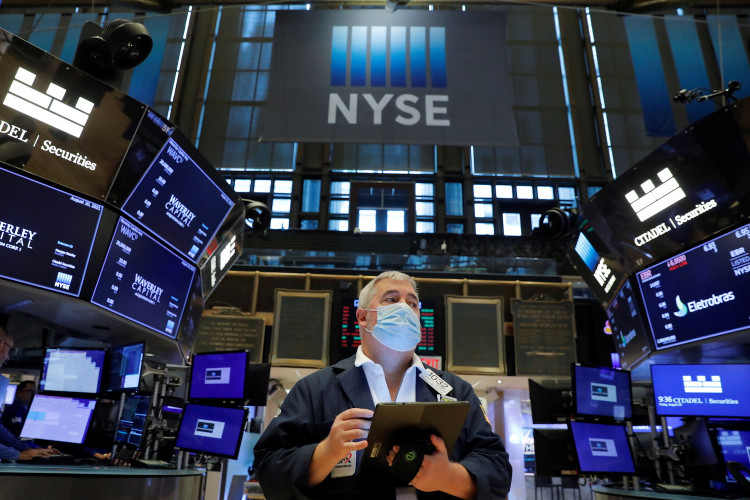The global financial market experienced a "Black Wednesday," with a comprehensive decline in the U.S. stock market.
In the previous trading session, the S&P 500 Index fell by 1.4%, and the tech-dominated Nasdaq Composite Index fell by 2.2%, marking its worst single-day performance since February of the year. The Dow Jones Industrial Average Index declined by 1%, making it the best performer among the primary indices.
Most media attribute the steep fall in U.S. stocks to Fitch's recent downgrade of the U.S. rating.
On Tuesday, August 1, Fitch, one of the three major rating agencies, downgraded the U.S. long-term foreign currency debt rating from AAA to AA+. This was the second time the U.S. rating has been downgraded since Standard & Poor's did so in August 2011.
In response, U.S. stocks opened collectively lower on Wednesday, with the Nasdaq falling 150 points at the open.
However, compared to the market "earthquake" caused by the downgrade twelve years ago, the market fluctuation on the day of the downgrade was not significant. Notably, the sovereign risk of the United States remained undisturbed, especially in the bond market.
Some investors have stated that although the U.S. rating has been downgraded, they are not concerned about the credit status of the U.S. JP Morgan CEO Jamie Dimon suggested that investors shouldn't be overly concerned, describing the U.S. as the "best economy in the world's history."
Despite this, numerous analysts issued warnings about the dangers lurking in U.S. debt.
Mizuho Securities' Chief Economist in the U.S., Steven Ricchiuto, pointed out that the downgrade basically highlights problems with U.S. government spending. He described this as an unsustainable budget situation, as economic growth alone cannot resolve the issue. Consequently, they will either have to address the problem or face potential further downgrades.
The newly released ADP non-farm employment data significantly exceeded expectations, pouring cold water on investors hoping for a delay in rate hikes in September.
On Wednesday, August 2, the U.S. ADP employment report showed that the number of people employed in the private sector in July increased by 324,000 after seasonal adjustments, significantly surpassing the expected 190,000 and lower than the increase of 497,000 in June.
Some analysts believe that perhaps last month's "weak" non-farm data was an anomaly. The current ADP survey shows an increase of 324,000 jobs in July, significantly exceeding economists' expectations of a 200,000 increase in non-farm payrolls this Friday. The unexpected ADP data may present an upside risk to non-farm payrolls.
The U.S. labor market remains robust, making the Fed's September rate hike path more uncertain. The Federal Reserve Observer Tool at the Chicago Mercantile Exchange shows that the probability of the Fed not raising rates in September has slightly dropped to around 80%, while the probability of a 25 basis point hike has risen to around 20%.
In addition to this, a shocking announcement from the U.S. Treasury Department stunned the market that day.
On Wednesday, the U.S. Treasury Department announced its quarterly refinancing plan, increasing the scale of long-term bond auctions for the first time in two and a half years. The latest total issue of refinancing bonds is $1030 billion, higher than the $960 billion in May of the previous quarter and slightly higher than the $1020 billion disclosed by the media earlier this week.
As traders previously expected, the U.S. government plans to issue debt of various maturities on a larger scale.
The government's massive debt issuance plan, the surprising ADP employment data, and Fitch's downgrade, three forces intertwining, delivered the heaviest blow to U.S. stock investors.
U.S. stock risk warnings have accumulated for some time.
As the Wall Street Journal previously mentioned, last week's data showed that the difference between the S&P 500 Index and the 10-year U.S. Treasury yield is only 1.1 percentage points, the lowest level since 2002. Also, the difference with 10-year inflation-protected Treasury bonds fell to its lowest level since 2003, at 3.5 percentage points.
This indicator has fallen to a twenty-year low, threatening the recent rise in U.S. stocks: stocks usually need to reflect higher returns than bonds to compensate for their high-risk characteristics.
This narrowing trend of risk premium began to emerge in the second half of last year, and despite pressure from the Fed to raise interest rates to combat inflation, the stock market still showed stability.
Analysts generally believe that as time goes on, the risk premium will return to an average level. Historically, this adjustment is often due to the unclear future earnings outlook for companies.






